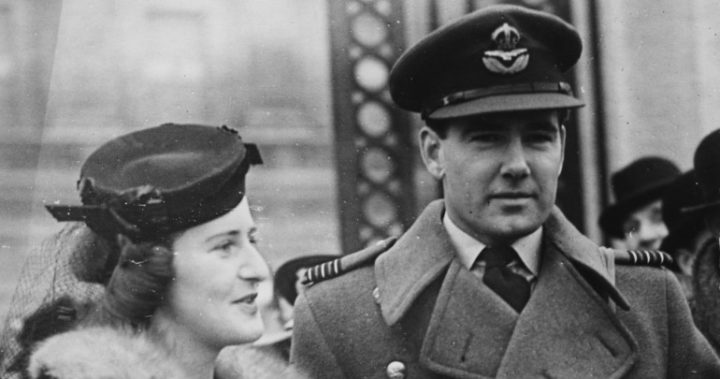How a poor Welsh immigrant became the most decorated Aussie war hero

Hughie Edwards… or, to give him his full title, Air Vice Marshall Sir Hughie Idwal Edwards, VC, KCMG, CB, DSO, OBE, DFC, MiD.
His name wasn’t a diminutive. Born in Fremantle in 1914 to a Welsh family, he was was christened Hughie Idwal Edwards. Through life, he would be known as Idwal to his family and Hughie to most Australians, including his wartime aircrews.
He was a bright student, but family fortunes were unable to fund him beyond Junior Certificate level. Leaving school, he had a number of civilian jobs before joining the Royal Australian Artillery. Later, he applied for and was accepted as a cadet in the RAAF. Despite being neither a natural nor gifted pilot, he managed to graduate from Point Cook.
Heading to England and joining the RAF, he was promoted to flying officer, gaining expertise in the then new Bristol Blenhein bomber. A few months later, the wings of his aircraft iced up causing it to go into a flat spin. Ensuring his crew parachuted safely out of the doomed plane, he made good his own escape, only to have his harness snag on the aerial post. Pinned by slipstream and centrifugal force and unable to free himself, he rode the aircraft to the ground. Amazingly, despite critical injuries, he survived.
Edwards spent two years recovering in hospital. By April 1940, the ‘false’ war under way, he gained permission to return to active duty as a flight lieutenant. Surviving two more accidents, and with such great losses in the service, he was again promoted, this time to acting squadron leader. By May 1941, at 26 years of age, he gained the rank of acting wing commander and assumed control of 105 Squadron RAF.
Despite admitting (but only to his closest confidants) that he was as scared as any of his men, he was a courageous leader who never shirked an issue. In an action on June 15, 1941, he was awarded the DFC for skill, gallantry and great leadership after leading his formation at mast height against enemy shipping,.
Nineteen days later, he led 12 Blenheim bombers at extremely low level on a daylight raid against the German city, Bremen. Flying under power lines, dodging a balloon barrage, ignoring intense anti-aircraft fire, they pressed home the attack. Four aircraft were lost and many others damaged, including Edwards’ own. He was awarded the Victoria Cross for gallant leadership.
In July 1941 he took his squadron to Malta to attack Italian shipping. Superiors forbade his operational flying, much to his chagrin. Losses of men and machines were dramatic. After two months on the island, only three of the squadron’s original eighteen aircraft remained.
Next, a good speaker and an imposing presence (he stood 188cm tall and was fit and well built, a onetime Australian Rules footballer) and so highly decorated, he was taken on a three-month propaganda tour of the United States. Returning in January 1942, he married Pat Beresford, widow of a good friend.
He continued to lead by example, flying his favourite aircraft, the Mosquito, as well as Lancaster bombers (on which, incredibly, he never formally converted), and was promoted to Group Captain. His continuing leadership gained him a DSO. Further awards followed: a mention in dispatches and, in 1947, his appointment as an OBE.
Edwards’ distinguished career continued post-war, with conversion to jet fighter aircraft and a posting to command a station in Iraq, acquitting himself admirably during that country’s military coup of 1958. This brought elevation to air commodore in 1959, being invested CB the same year and then, in 1960, his appointment as an aide-de-camp to Queen Elizabeth II.
The lad whose education was minimal but who had distinguished himself throughout the war, then became a director at Britain’s Air Ministry in 1962, remaining there until September 1963, when he retired from the RAF.
Hughie Idwal Edwards returned to Australia, became a director af a number of successful businesses and then, appointed a knight KCMG, was sworn in as Western Australia’s state governor in January 1974. Within months, and in chronic poor health, he was to resign in April 1975. Thus did the son of a poor Welsh immigrant family, following a meteoric rise in the RAF and becoming the most decorated Australian of World War II, achieve one of the highest offices in the land.
Sadly, Hughie Edwards suffered a fall in 1982 and died of a subdural haematoma. The man who survived a number of aeroplane crashes and all the ordnance the Germans could throw at him succumbed to something relatively mundane. He was just 68 years of age.
Vale, brave warrior.








 Proudly Australian owned and operated
Proudly Australian owned and operated